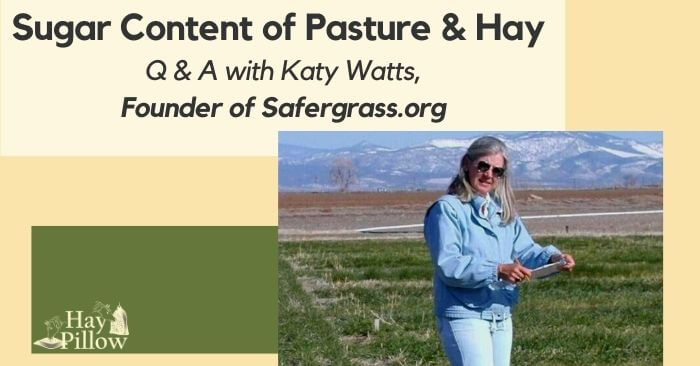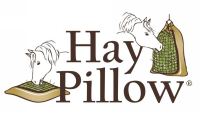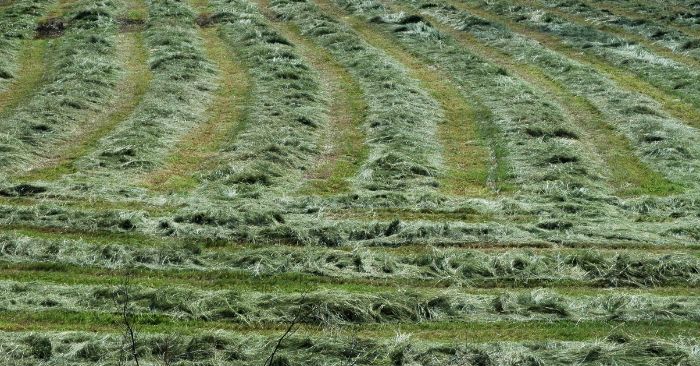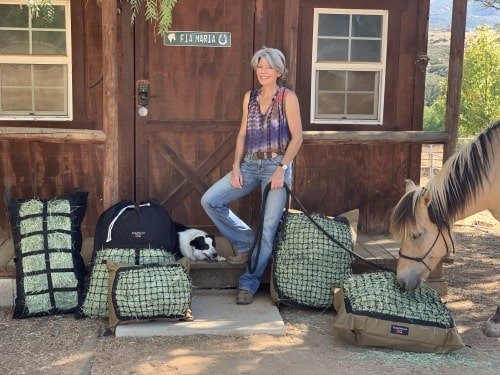Sugar Content of Pasture & Hay: Q & A with Katy Watts, Founder of Safergrass.org
Katy worked as an independent contract researcher performing pesticide efficacy and residue studies and consulting for farmers growing potatoes and grain. When her horses experienced laminitis, she switched her focus to sugar content of grass and hay.
Over the next decade, she wrote articles in veterinary journals, conducted cooperative field studies with academics, spoke at numerous veterinary and nutrition conferences, wrote various book chapters and lectured worldwide. Katy is the founder of safergrass.org.
Read on to learn more about Katy's findings from her field studies in her plight as a plant scientist to better understand the factors that contribute to NSC (NonStructual Carbohydrate) levels in plants.

First of all, what sparked your interest in studying equine diets?
What are the main contributing factors to sugar levels in pastures?
- Cold temperatures
- Nutrient deficiency
- Drought stress
What times of the day or night are “safer” to turn horses out on pasture given those factors?
When conditions for grass growth are optimum, sugar levels are lowest from about 3AM to 10AM. When nights are near freezing, or drought stress is ongoing, sugar levels stay high around the clock and sensitive horses should be removed from pasture.
What conditions create the lowest sugar levels in pastures?
- Foggy, cloudy weather with nights above 40F
- Optimum levels of nutrients and moisture with management to prevent heading.
What conditions pose the greatest risk for higher sugar content in grass?
- Sunny days and nights with freezing or near freezing temperatures
- Abundant sun and drought
- Nitrogen deficiency
Do the same principles apply when cutting hay?
What species of grasses do you recommend when planting lower sugar pastures?
What test results do you consider as a sum for NSCs (NonStructural carbohydrates)?
Why do vets and nutritionists quibble over what percentages to use as a NSC sum?
What are the definitions of Starch, ESC and WSC?
- Starch: a polysaccharide found primarily in the grain or seed and/or root portions of plants.
- ESC: captures monosaccharaides, disaccharides, oligosaccharides, and a small fraction of fructans.
- WSC: captures all of the ESC components + the remaining fructans.
Do you recommend grazing muzzles or slow feed hay bags/nets?
How do you determine if you should test your hay?
What are the benefits of testing your hay?
What do you consider an ideal diet for horses that are metabolically challenged?
Overall - My preference is for equine guardians to provide hay free choice that is not more than 0.9 Mcal/pound DE and less than 10% NSCs singling out horses that require additional calories daily for supplemental bucket feed. This allows for all horses in the herd to live together and get plenty of chew time; keeping something in their stomachs around the clock.
Do you have any closing thoughts?
To learn more about Katy's extensive research & field studies, visit Safergrass.org
Helpful How To Resources
- Grass Hay vs Pellets, Cubes & Chopped Hay – Pros & Cons
- Are You a Prisoner of Feeding? Here's How I Broke Free
- 6 Great Reasons to Feed Your Horse from Ground Level
- 7 Slow Feed Dos and Dont's for Horses
- 7 Easy Ways to Help Prevent Colic
- Causes of Equine Ulcers – 7 Stress Factors & Solutions
- Never Exercise Horses on an Empty Stomach...Ever
- Why You Shouldn't Transport Horses On An Empty Stomach
- Keeping Horses Warm Naturally – Internally and Externally
- Why Most Horses Prefer to Eat Outside







1 Comment -
Elaine Simon •
The best article and research I have seen
Ever!
I have a one year old filly who suffered with Epiphysitis
And if I had read this article I do not believe this would have happened.
It was too late already when we realized the grass hay we were feeding was so high in sugar.
I now have a horse that will have a long recovery .